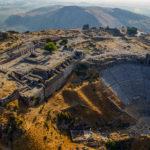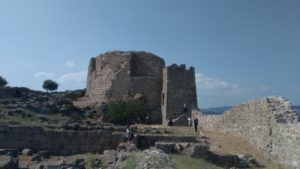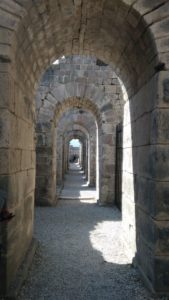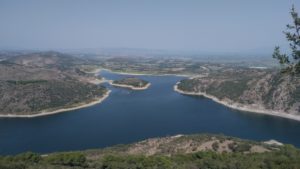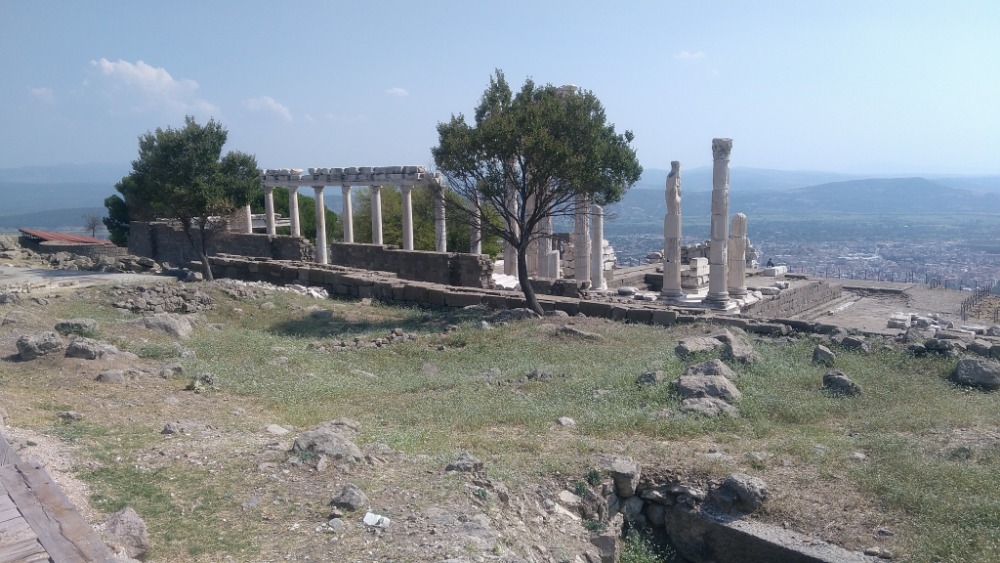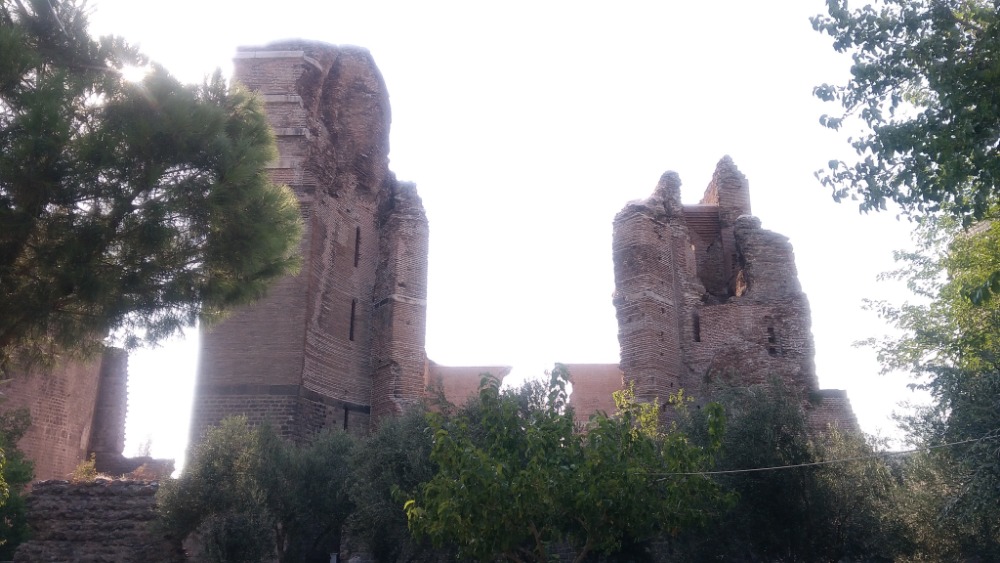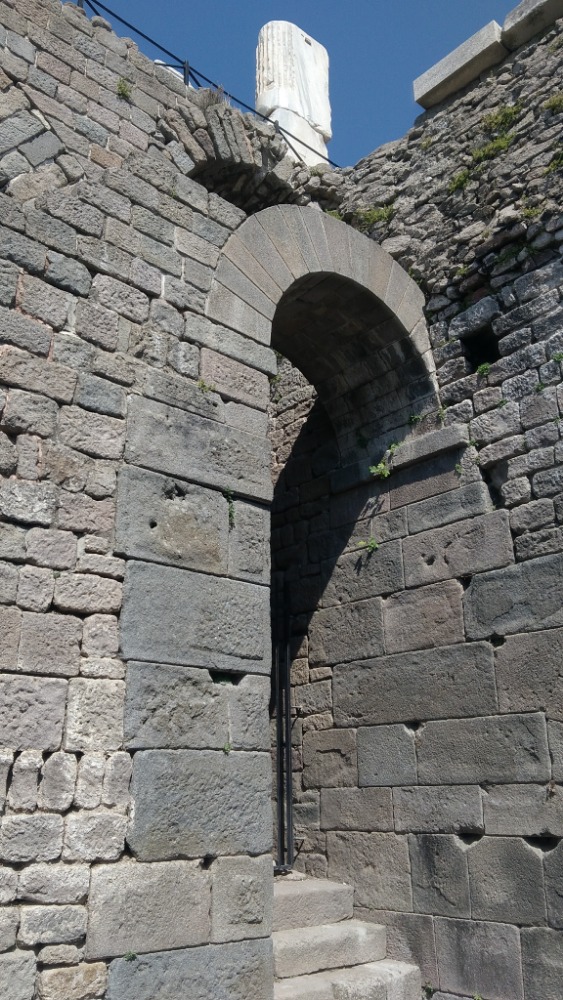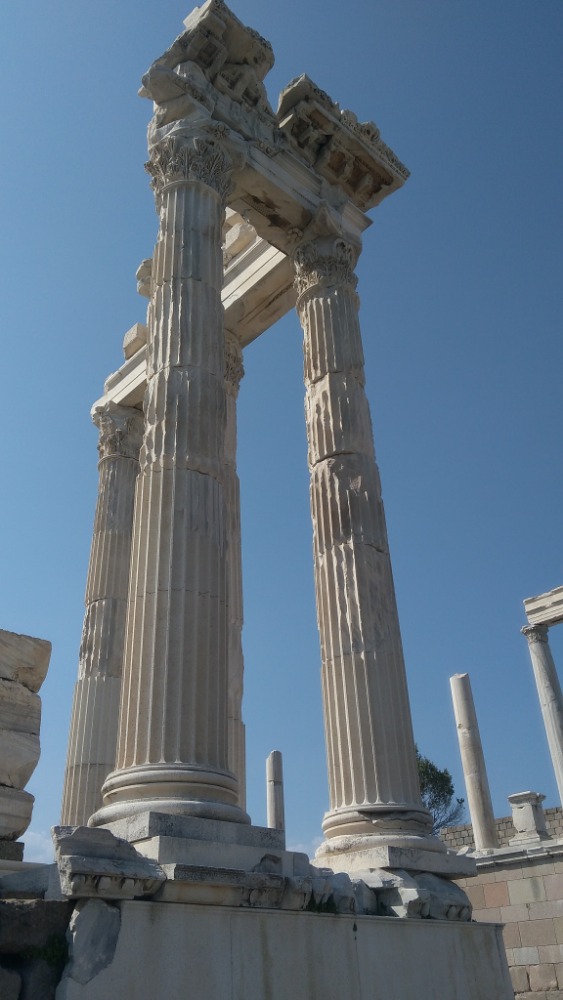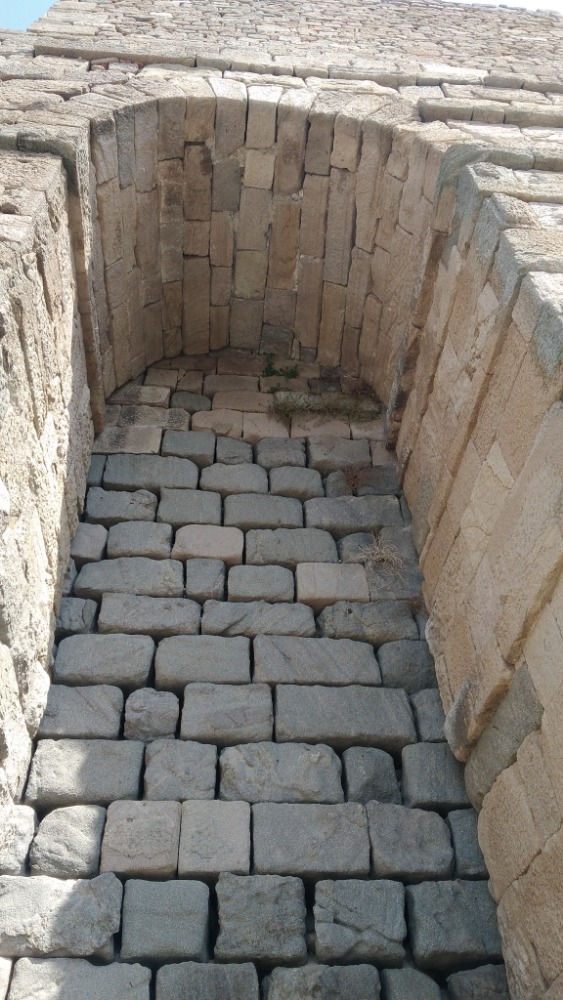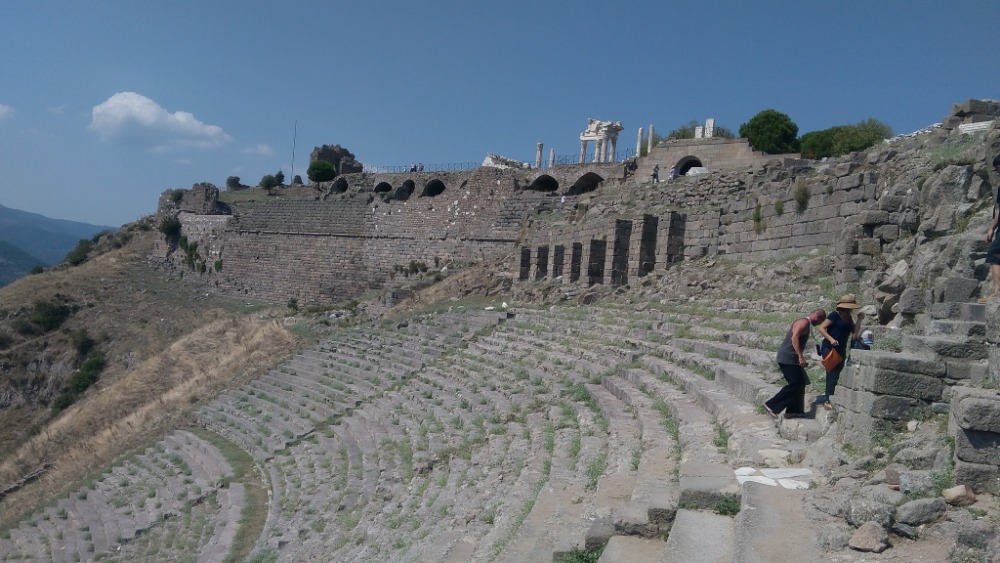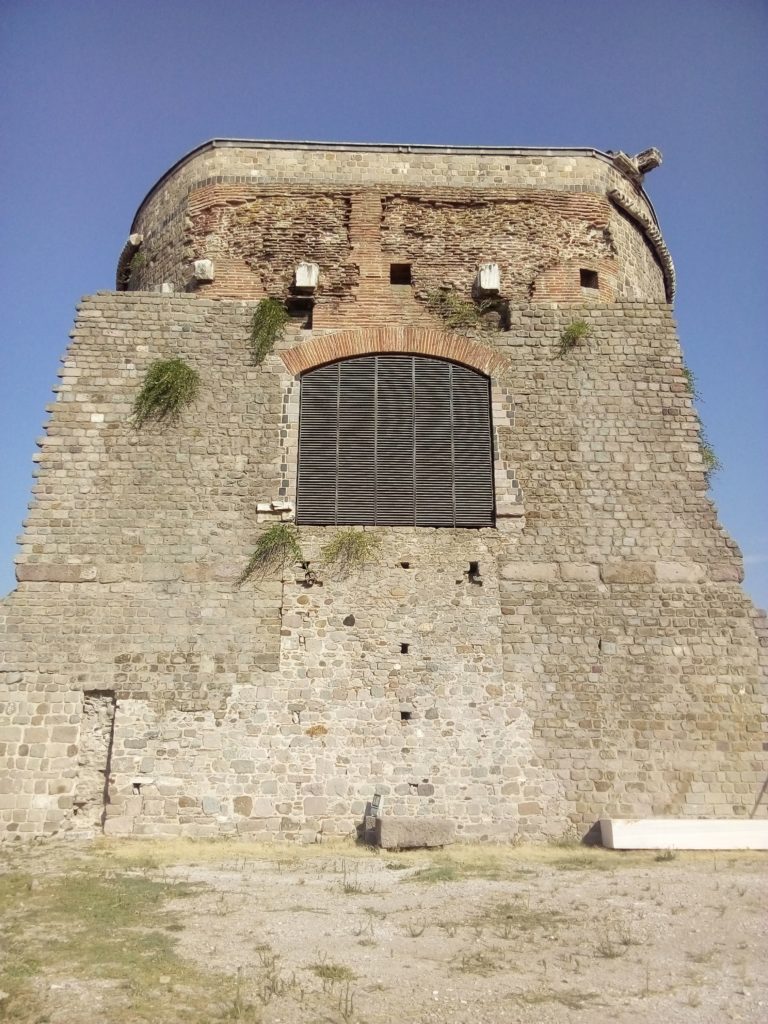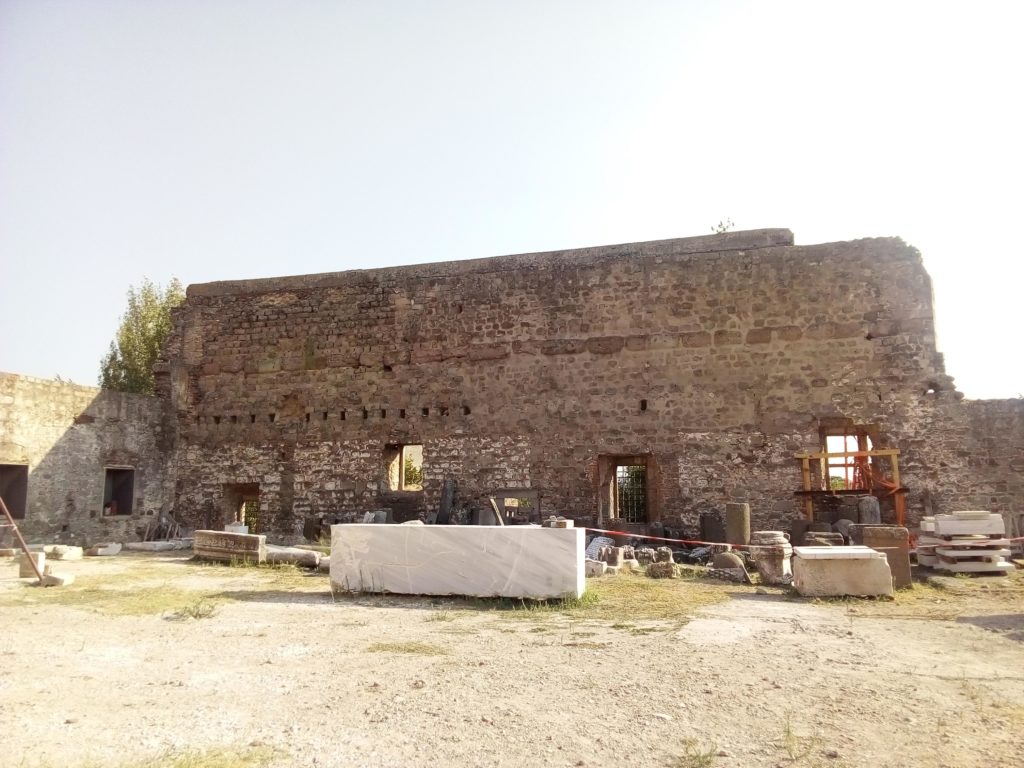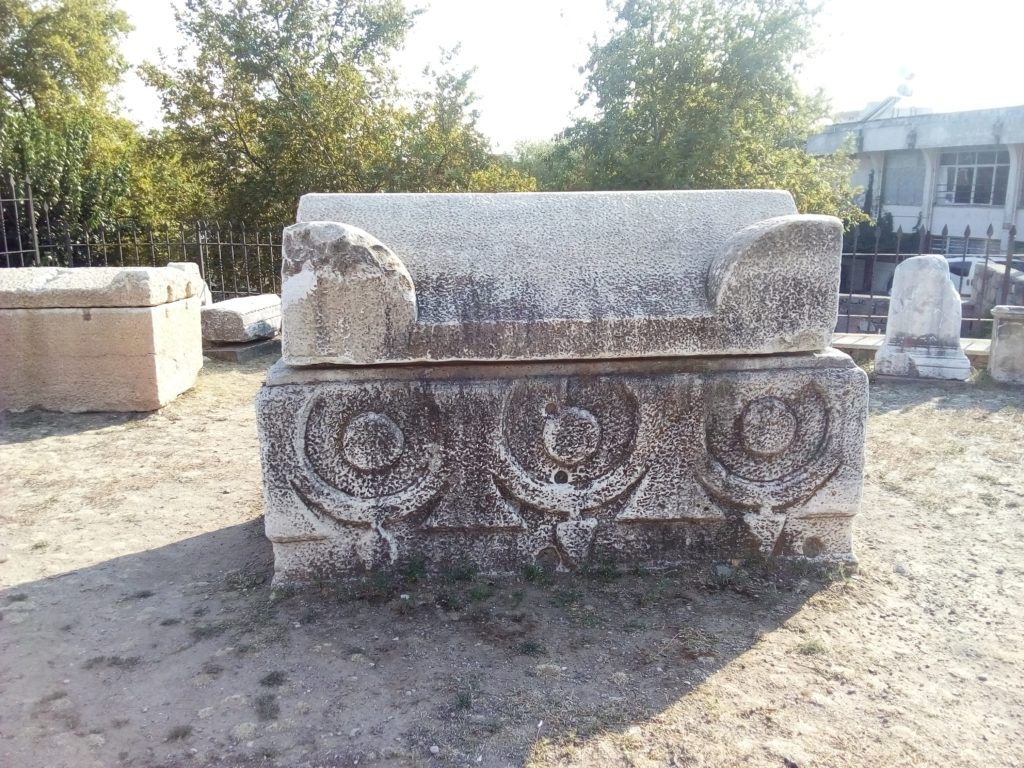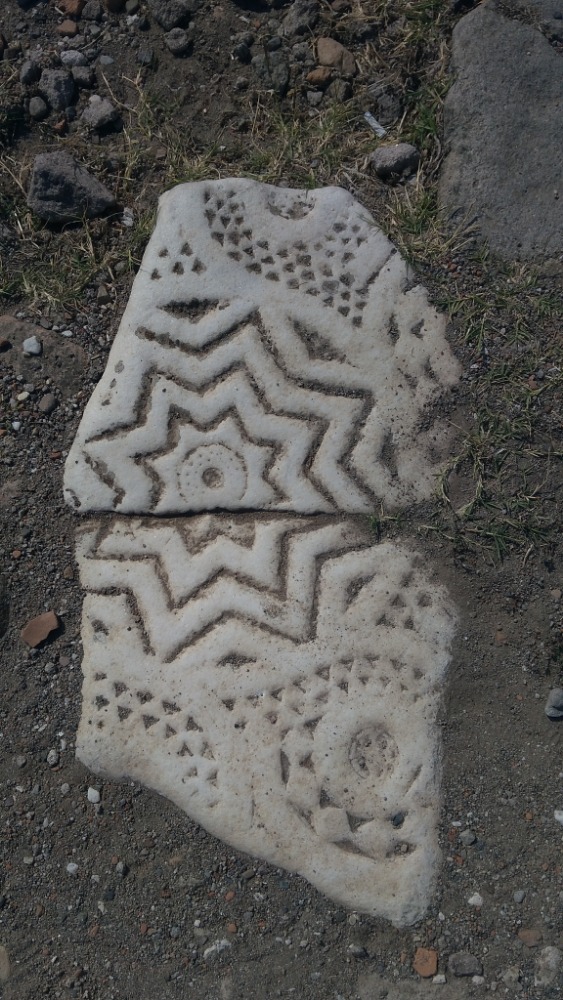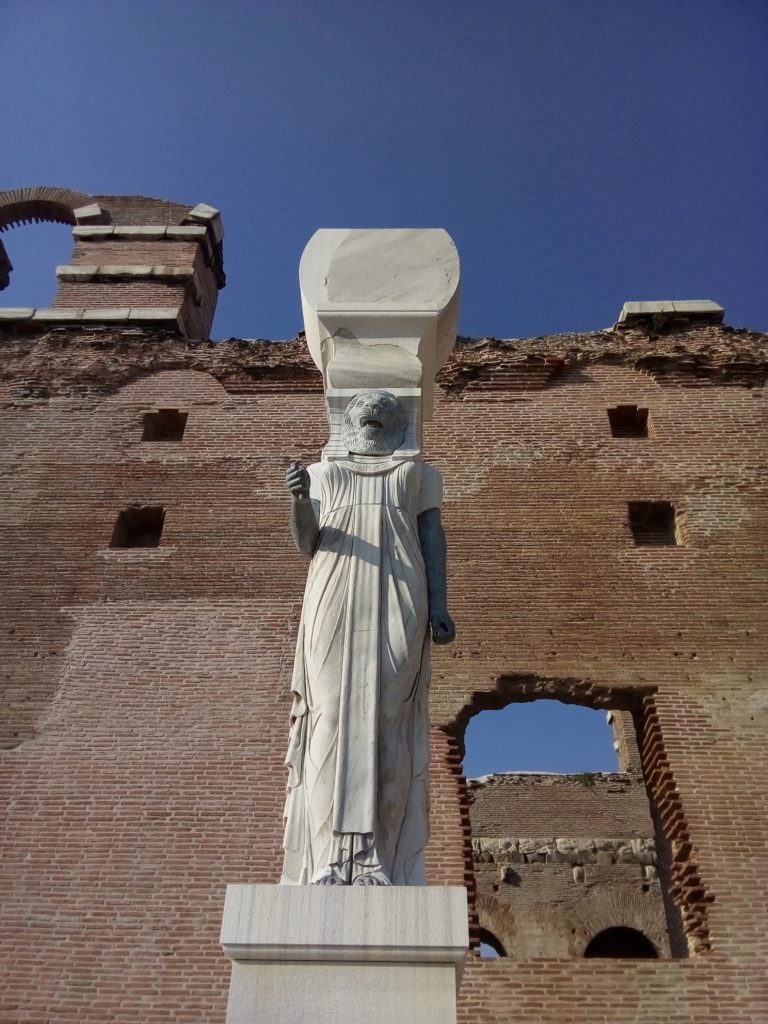Overview
One of the most important cities of Hellenistic and Roman period, Pergamon is located in modern Bergama(named after Pergamon), İzmir. Pergamon had an enormous effect on antiquity and human history before it lost importance around 5th century AD. The city is known for its invention of patchment, an early type of paper which allowed easier recording and writing, being one of the holy sites of early christianity (which is called seven churches of Asia) which was also important for spread of Christianity in Roman Empire. Its majestic and very beautiful ruins must be visited for those are looking for cultural trip around western Turkey.
Foundation and Brief History of the City
Although the city was founded around 2nd millenia BC, it was just a small and relatively unimportant hill-town. The real history of Pergamon starts with Alexander the Great, who took over area after defeating Persians. After Alexander’s death, his follower and general Lysimachus(of Macedon) controlled the area,who was fighting against other Macedonian generals of Alexander for power and dividing the areas conquered by Alex. Lysimachus died fighting against Seleucus (another general of Alex), after which the area was left to Philatauerus, a fellow of Lysimachus, who was left with a hoard of treasure, which he spent for building the city. The rise of Pergamon begins with Attalus I, who founded kingdom of Pergamon centered in the city, styled himself as king and defeated Galatians (a Celtic people) who was causing destruction throughout Anatolia. With Attalus and rise of his dynasty, Pergamon rose to become one of the wealthiest and most beautiful city of Graeco-Roman world.
After the Romans defeated Seleucid empire (another successor of Alexander centered around Syria), the lands of kingdom of Pergamon increased to cover most of western and central Anatolia.
Around 130 BC, last Pergamene king handed over the kingdom to Romans voluntarily, and it became the Roman province of Asia (from which the whole continent named after!). Romans financed many buildings and put strong effort on Pergamon, especially Trajan and Hadrian.
DISCOVERING PERGAMON
Pergamon is famous for several of its outstanding monuments, most famous ones being Altar of Zeus (now located in Pergamon Museum in Berlin), Temple of Trajan on the center of Acropolis (hill city), Temple of Dionysus and most especially the Library of Pergamon, which was the biggest and most important after the one in Alexandria. Another striking part is the the theater, which is the steepest one in the World! (I was personally afraid of walking the steps down..). Scroll down for these interesting humankind achievements.
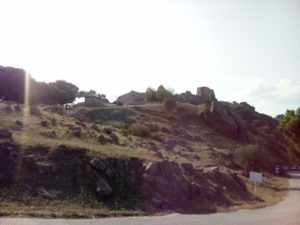
Temple of Trajan
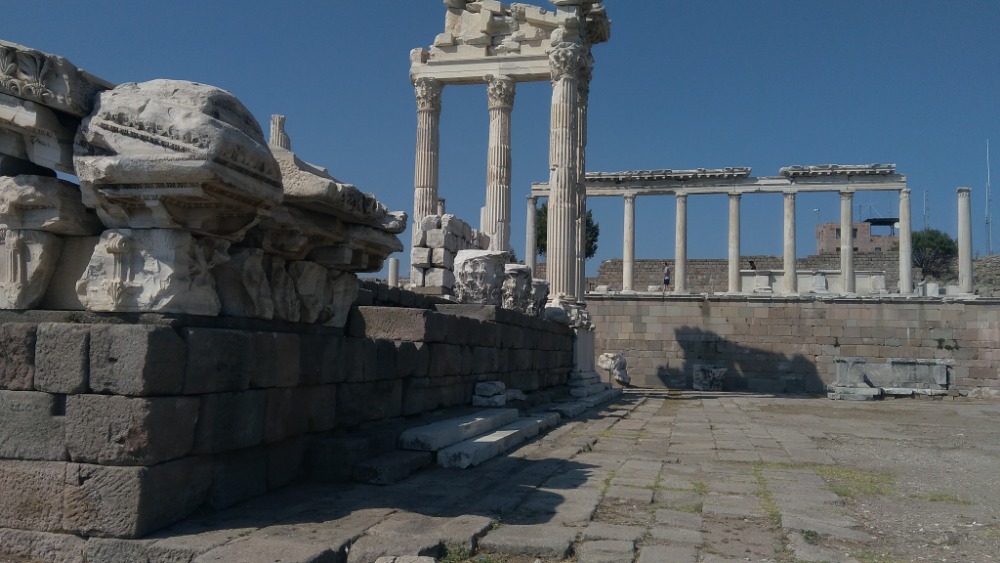
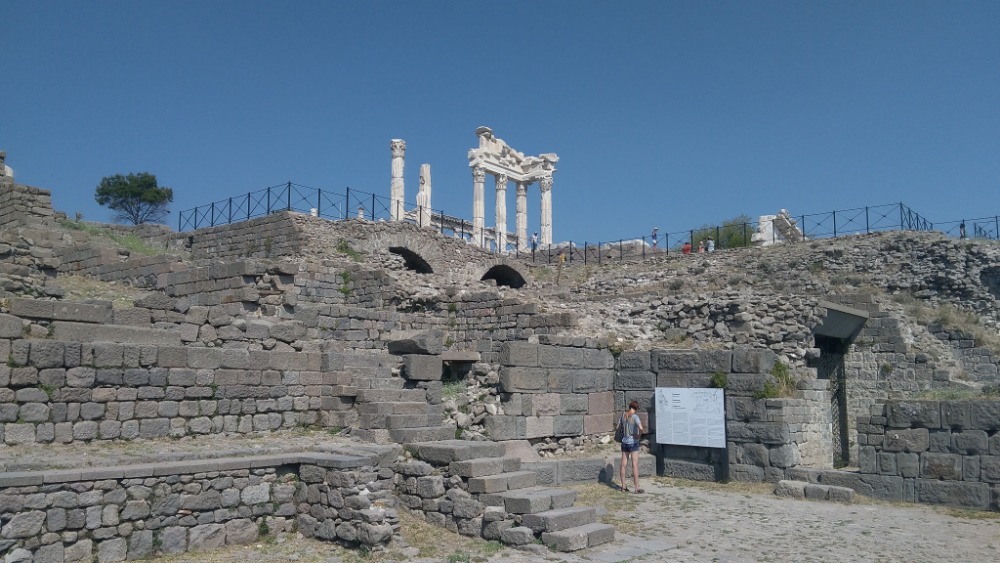
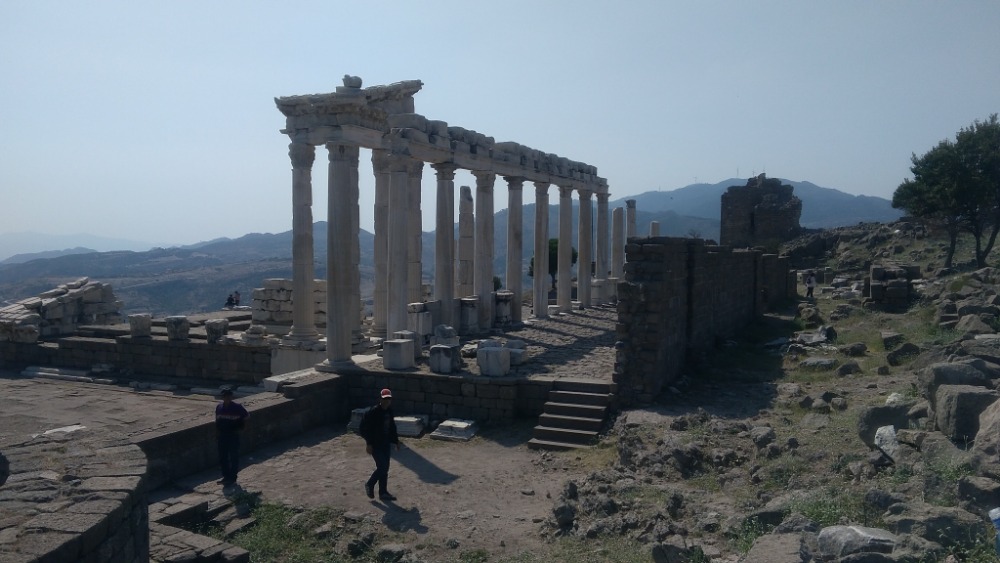
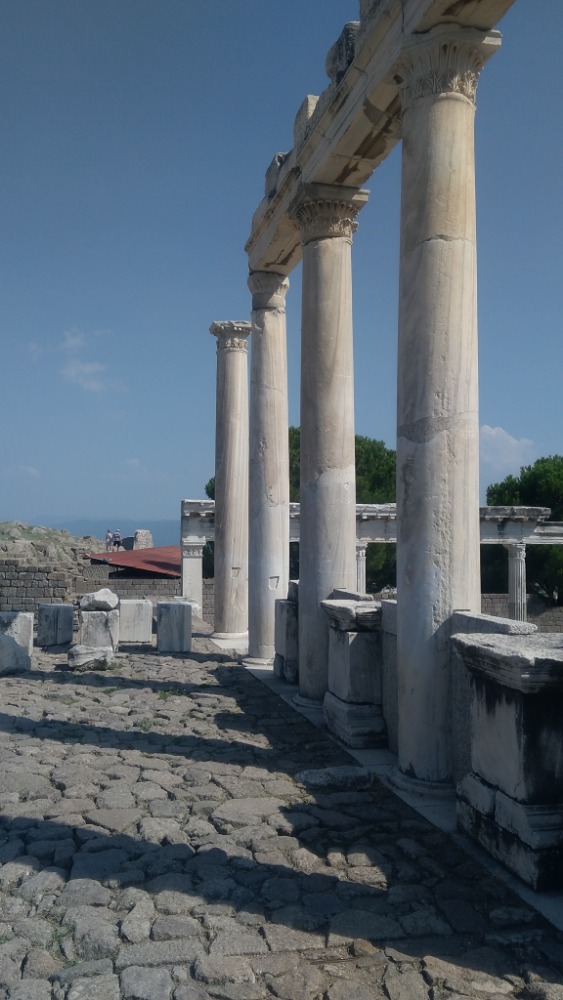
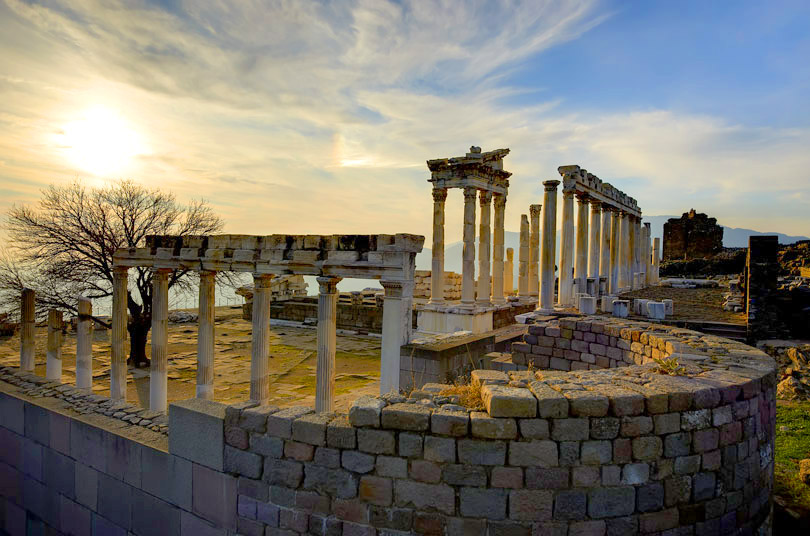
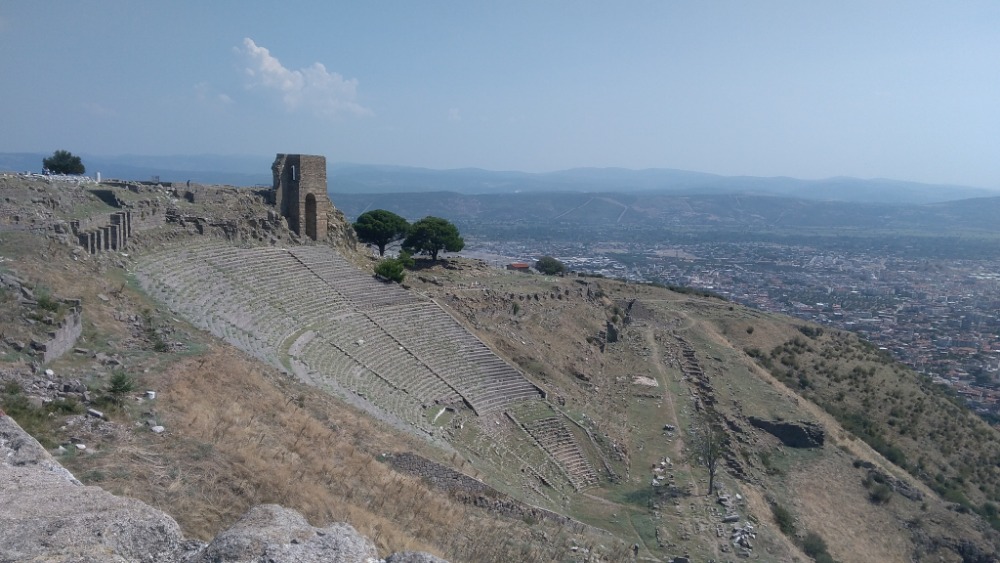
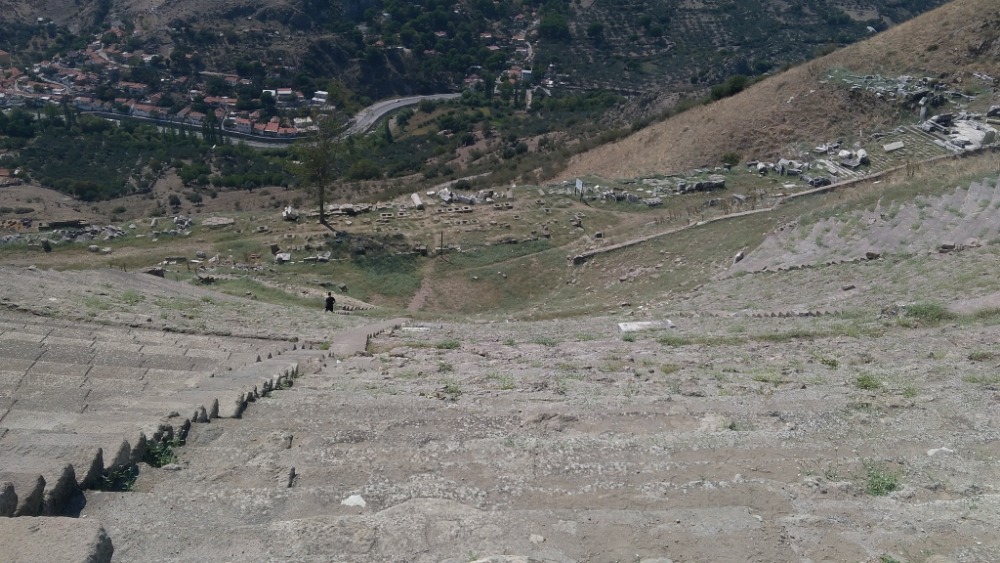
Pergamon Altar (Altar Of Zeus)
Perhaps one of the saddest things about Pergamon is, the absence of its most spectacular remain, the Altar of Zeus. Today, it is located in Pergamon(!) museum in Berlin, and it was gifted by the then-Ottoman Emperor Abdulhamit II. Yet, we must also look at the bright side. Given the neglection of such monuments,history and heritage by then-Ottoman government, maybe it was also a good effort, since the German professionals reconstructed and preserved it..
The altar is famous for its frieze of Gigantomachy, which illustrates the war of the Olympian gods and the Titans(giants).
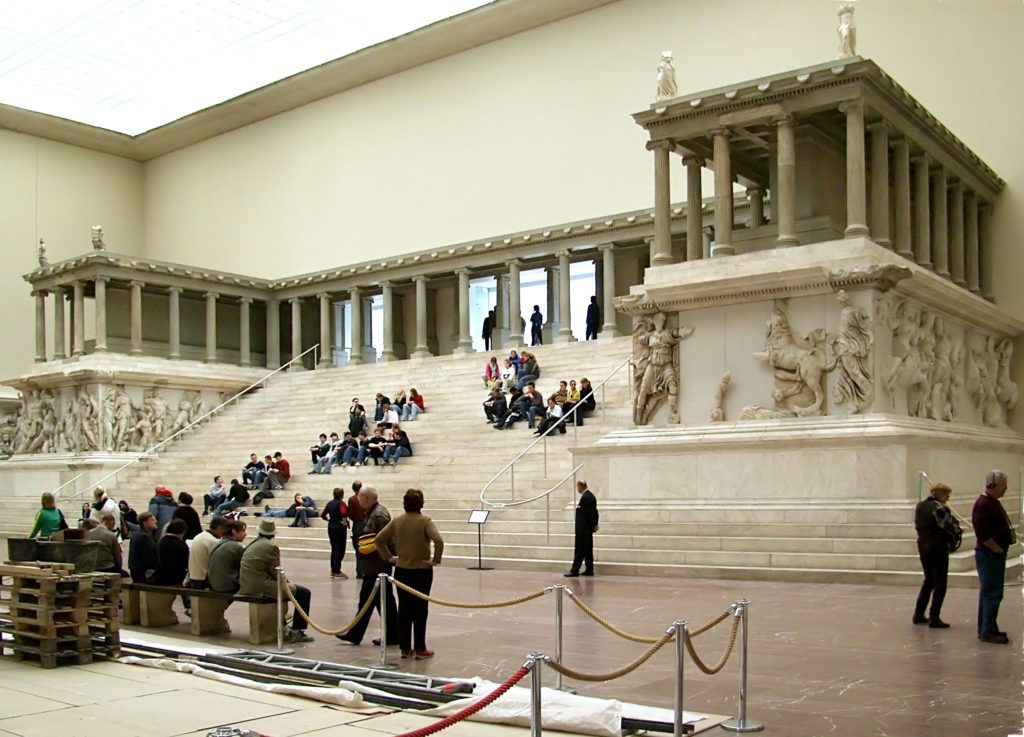
Altar today in Pergamon museum,Berlin. It is great museum with vast collection of artefacts, i strongly reccommend a visit! (Picture taken from Wikipedia) 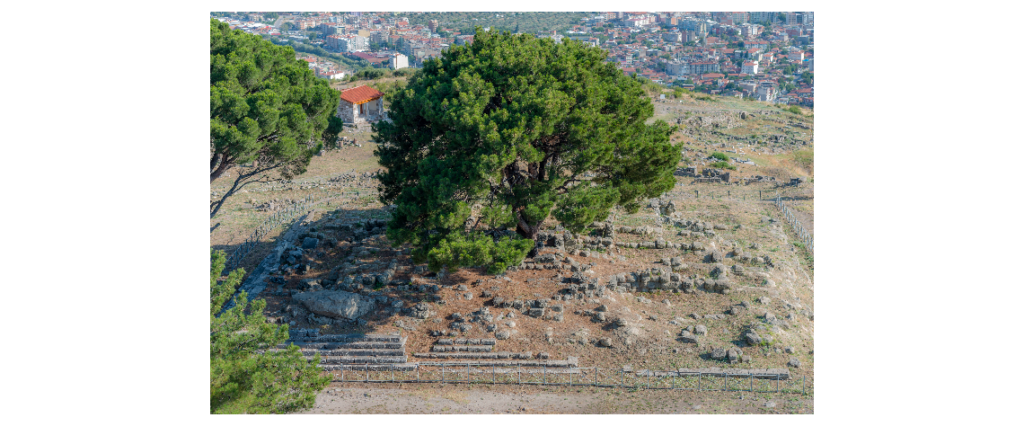
The base of Altar at Pergamon today, as seen from the top of the Acropolis(Picture taken from visitizmir.org)

GEOGRAPHY, SURROUNDINGS AND SCENERY
Pergamon is located on a towering hill (Acropolis) overlooking the modern town of Bergama, which also houses some extensions of Pergamon, such as the aqueducts, and view of Dam lake which is a spectacular sight!
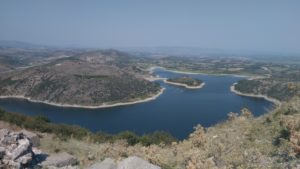
You can have a big, wide view of modern downtown of Bergama from the
acropolis, plus some of the surrounding villages. The area is quite
green in terms of nature, with lots of olive trees.
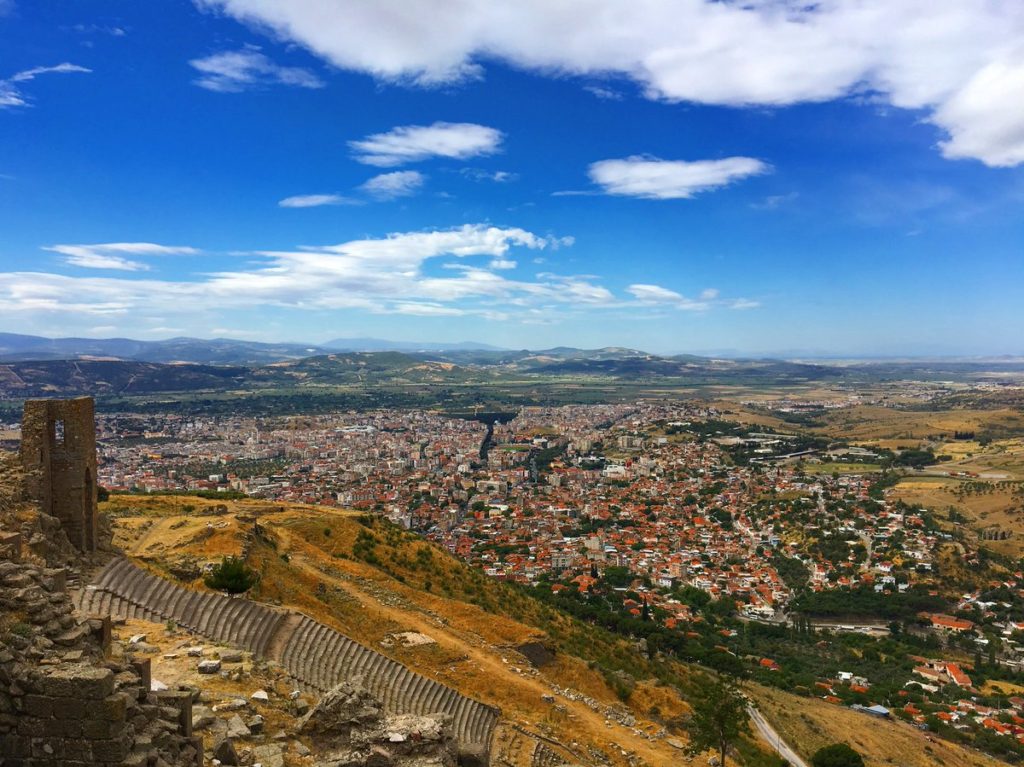
RED BASILICA (TEMPLE OF SERAPIS)
In downtown Bergama you might see a massive, red building complex, which is the Red Basilica (earlier Temple of Serapis). It was consturcted during late Roman period and dedicated to Egyptian god Serapis (worship of non-Greco-Roman gods were quite common in late Roman period) and during the early Byzantine christian period, it was converted to a Church, whereas one of the round rotunda next to it was used as a synagogue, and the last rotunda was made a mosque in 13th century (which is still in operation today). Interesting complex of 3 different religions in one building complex..(Click on pictures for the full size)
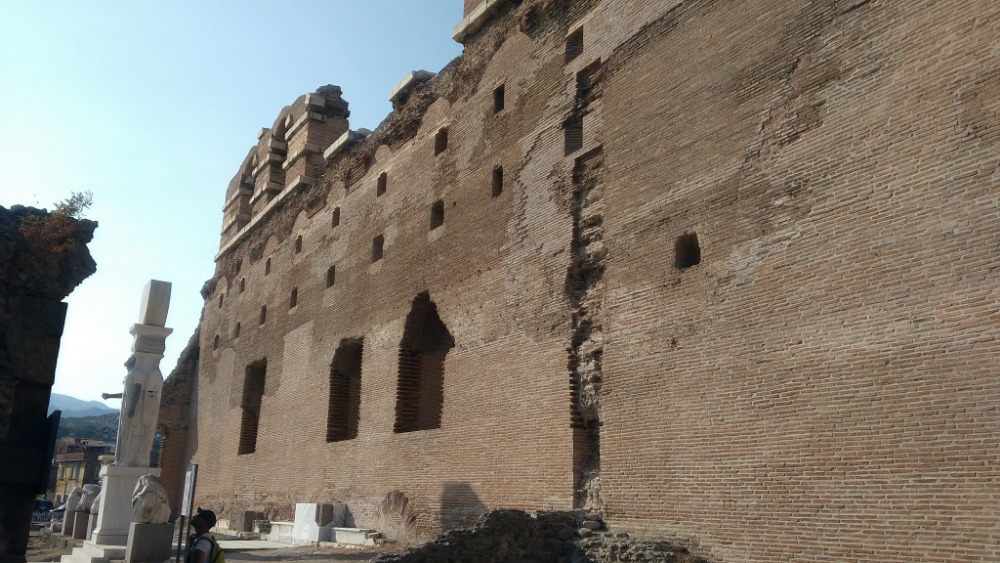
West of the Basilica 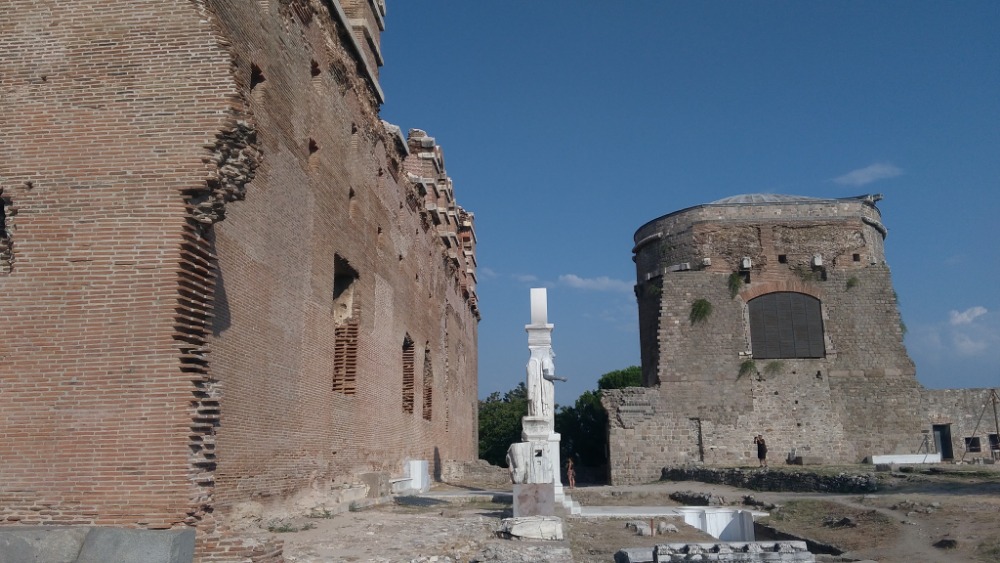
General view from north(the tower on the right was a synagogue) 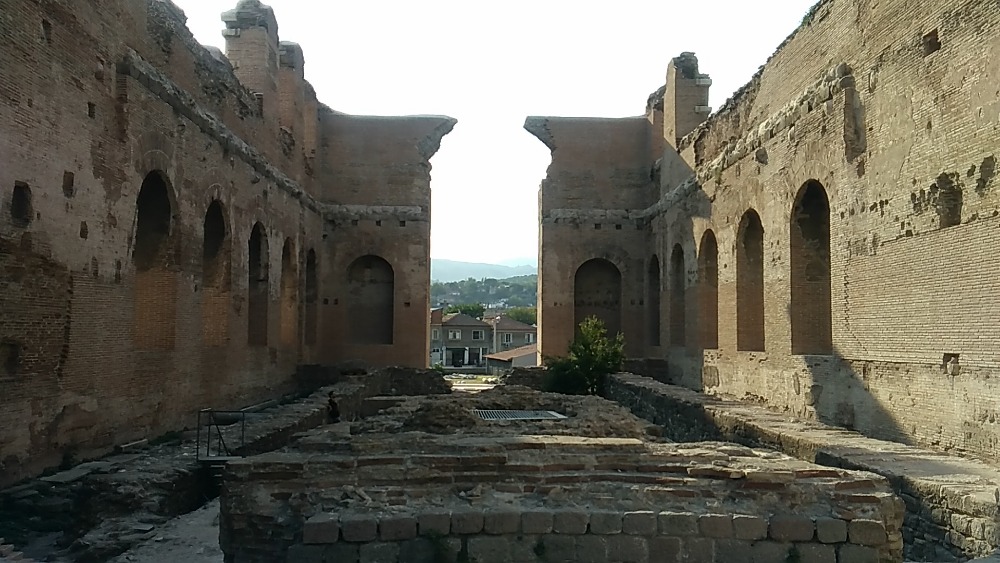
Basilica interior 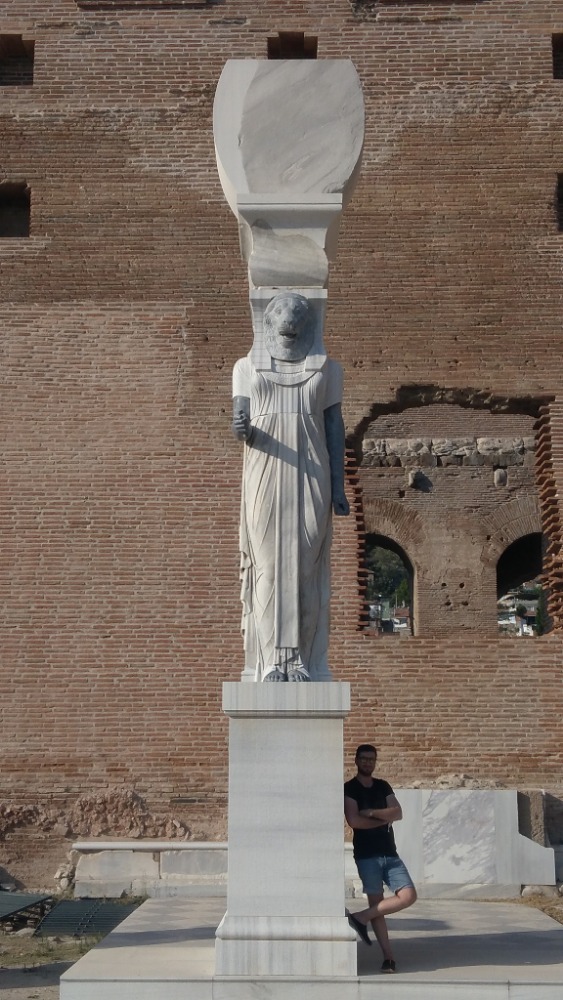
Statue of Serapis compared to an average humanbeing 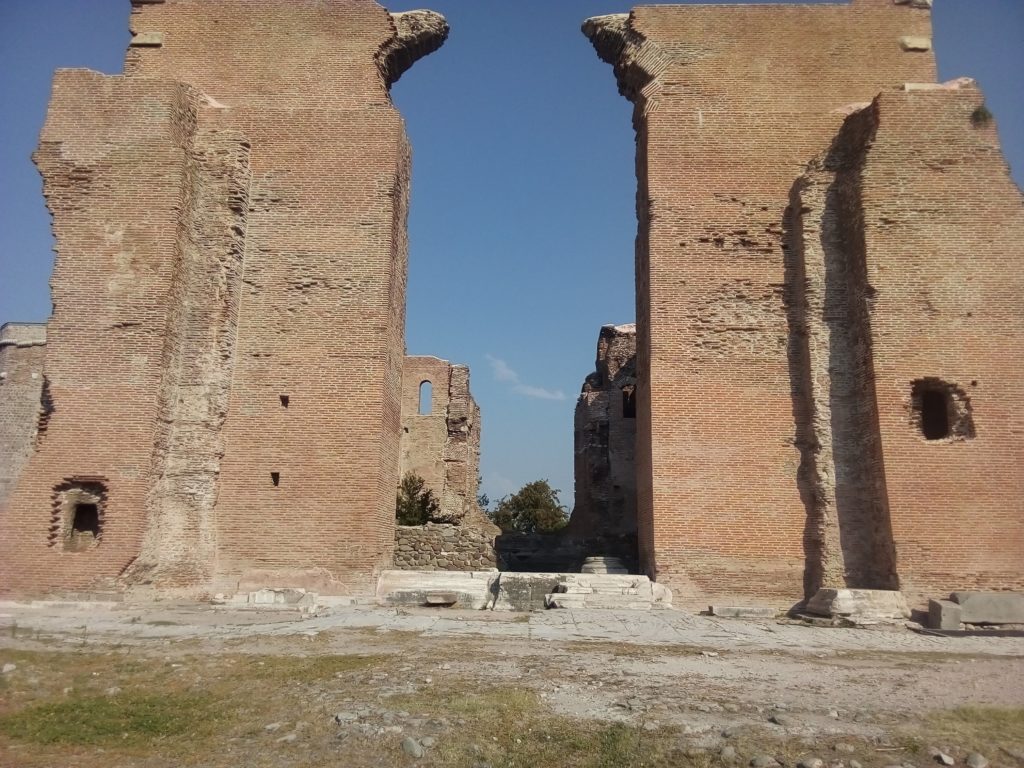
General view of the main entrance
LAST REMARKS AND CURRENT STATUS OF PEGAMON
Pergamon today is one of the most famous ancient cities of Turkey, an UNESCO world heritage site and a popular stop for both local and foreign tourists. The excavations are stopped as the site seems to be officially “unearthed”. The site is fairly intact, despite the fact that half the artefacts and some monuments of the city are located elsewhere in the world (most notably in Berlin).
Pergamon is arguably equal in importance to the Ephesos (arguably the most famous in Turkey), which is also located in İzmir. There is also cable car service from the downtown Pergamon, for those who feel “lazy”, or those who want to have an aerial view of both the acropolis and the downtown in general.
TRAVEL ADVICES AND INFORMATION
Bergama is located in İzmir (110 kms), however it is quite distant from the rest of the province, and is located nearer to modern day Manisa.
Personal advice: Bergama deserves a stay over, as it does not only have Pergamon, but also a lovely historical downtown, another ancient city in its borders (Asklepeion), the Red Basilica and more Ottoman-Byzantine and Roman remains. You can combine all these together (again a stay over recommended), and for a longer backpacking-hitchiking trip, I advise you to to continue towards İzmir and Manisa, both of which have tons of both natural and historical sites to see!
The entrance costs (as of 2019) 25 liras to Acropolis of Pergamon, another 25 liras for the cable car. Red basilica is free.
(Without a car) From İzmir central bus terminal, there are buses to Bergama every 30 minutes, and it takes about 1,5 hours to get there.
(Public transport) Take IZBAN (commuter train) to Aliağa station and ESHOT (Public bus) bus number 835, which leaves every 30 minutes.
From İzmir (Adnan Menderes) international airport -take IZBAN (commuter train) to Aliağa station, and take bus number 835, which takes around 2 hours.
SPECIAL THANKS
Special thanks to Vendy (from Czechia) for allowing to use her camera, as my smartphone was destroyed!
GALLERY
The rest of the pictures can be found below on gallery, which includes various different angles of the areas shown above(and some extra details). Again, click on them for the bigger view.


